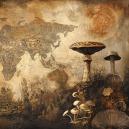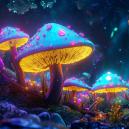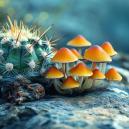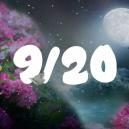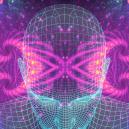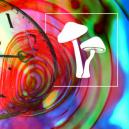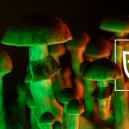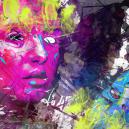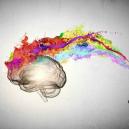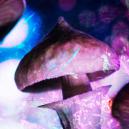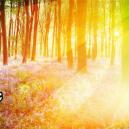Common Visual Components Of A Psychedelic Experience
Published :
January 22nd, 2018
Categories :
Effects

Tripping on magic mushrooms, LSD, and other psychedelics can make you experience various visual effects. These so-called visuals can range from indescribable colours and shapes to psychedelic forms and patterns that appear as real. In this article, we take look at the visual components of a psychedelic trip.
THE DIFFERENT TYPES OF VISUALS THAT CAN BE PART OF A TRIP
Hallucinations, psychedelic patterns and shapes, tracers, flashes, and indescribable colours comprise some of the most fascinating components of a psychedelic experience. These “visuals” as psychonauts call them, can be experienced when consuming many psychedelic substances, such as LSD, magic mushrooms, ayahuasca, and DMT. Let's take a closer look at the various visual components of a trip.
EXTERNAL HALLUCINATIONS
Scientists have defined two types of hallucinations, external hallucinations and internal hallucinations. External hallucinations under the influence of psychedelics can also be described as visual transformations. They can be triggered by ordinary things in your environment like people, objects, animals, places, etc. These things in your surroundings can morph into something else entirely, playing a unique role in your trip experience.
A variant of an external hallucination is experiencing a familiar object or person, but in extremely enhanced detail. External hallucinations can be compared to the phenomenon of pareidolia, where ordinary things may appear as something else, like when you see a face in the clouds or on a rock formation.
INTERNAL HALLUCINATIONS
Internal hallucinations are quite different from external ones. These are hallucinations that occur completely in an imagined environment with no direct link to the “real world”.
Most internal hallucinations start as a small image in front of you that doesn’t fill out your entire field of vision. When this happens, you can normally separate the hallucination from the background. These images can have different qualities, from not very real and cartoon-like appearances to very realistic.
Higher-level internal hallucinations are not just small images, but can become fully-fledged scenes or landscapes. A good comparison here would be dreams. During your trip, you may find yourself in a different world altogether. Such a full-blown hallucination can include all kinds of scenarios, including the interaction with other entities and beings.
Most psychonauts say that closing the eyes will usually make hallucinations more intense and real-seeming.
TRACERS/TRAILING
Tracers are moving things such as people, cars, animals, and other objects that leave visual “trails” behind. This is similar to the effect sometimes seen in movies or computer games. These tracers can be the same colour as the moving object, but not always. Tracers caused by moving objects can moreover be solid, half-transparent, or entirely transparent. Their intensity and duration can also vary. Some tracers are very short and then disappear quickly, while others last much longer. Sometimes, tracers are so intense that it can be difficult to see unless you do not move and keep your eyes still.

AFTER IMAGES
After images are similar to the tracers mentioned above. These are visual distortions that continue to appear in your vision even if the original image has disappeared. You can compare these to the glow or after image that you sometimes see after looking into a bright light. The difference from tracers is that after images don’t appear as smooth, blurry trails behind moving objects.
MAGNIFICATION
Magnification is one such visual effect that falls under enhancement of sight. As the name suggests, magnification can make things appear closer and larger than they actually are. During a psychedelic experience, it is not uncommon for the psychonaut to see far away objects, people, or animals in much greater detail than normal.
Magnification is relatively uncommon and when it happens, it often lasts for a very short time. LSD and ayahuasca are among those substances where magnification does sometimes occur. Some seasoned psychonauts report that they can trigger the effect by staring at an object in the distance.
COLOUR ENHANCEMENT
The classic psychedelic experience! Colour enhancement means that colours can become more vivid and much brighter. Those who experience enhanced colours on their psychedelic adventure often try to describe this effect; they say that red becomes “redder” or green becomes “greener”. Essentially, colours become more intense and distinct as compared to normal life. Some even report having seen indescribable “new” colours on their trip, for which there is no equivalent in reality.
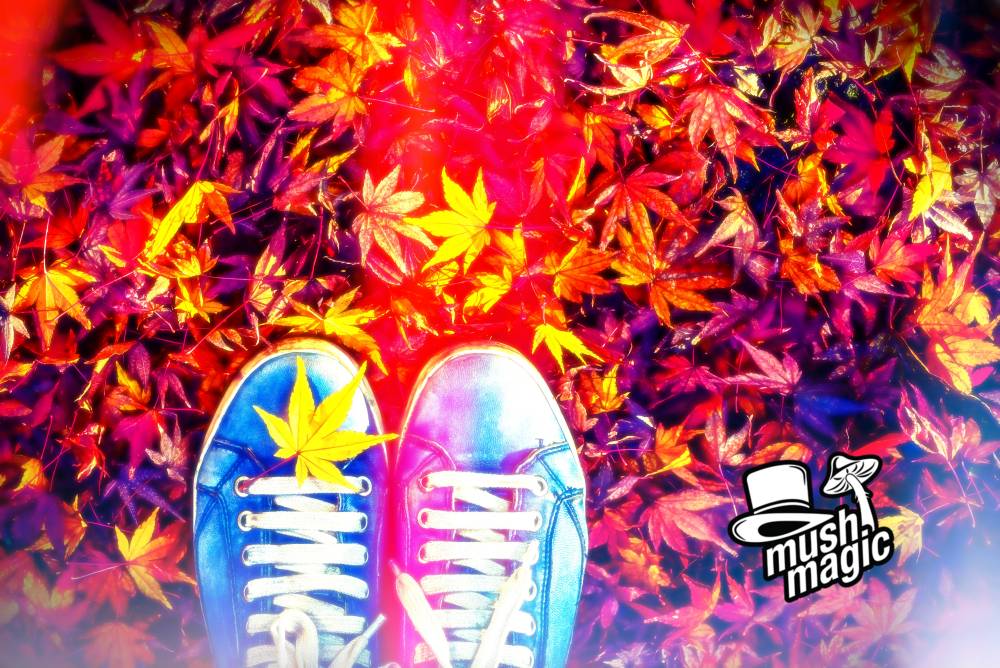
ENHANCED PATTERN RECOGNITION
This is another one of those psychedelic visual effects that can be compared to the phenomenon of pareidolia. Humans have the natural ability to recognise “significant” patterns such as faces; in the case of pareidolia, it makes us see things even when they are not really present. Examples for this phenomenon include the face on the moon, Jesus on a piece of toast, or a tree that looks like a person.
Under the influence of psychedelic substances, humans’ natural ability to recognise patterns can be greatly enhanced. During the trip, you may spot faces in each leaf on a tree, for example. Other ordinary things may look remarkably like a person or something else familiar. Enhanced pattern recognition, which could be described as a type of super-pareidolia, is special since it doesn’t involve any actual change in the things you see.
CLEARER VISION
This is an effect that also falls into the category of visual enhancements. Clearer vision during your psychedelic experience means that visual details of the things in your surroundings become extremely clear, focussed, and defined. The edges and details of objects and people can become more pronounced and “sharper”. An even more elaborate type of vision enhancement can happen as well. This occurs when your vision improves so much that it will also include your peripheral vision. In a normal state, our vision is rather limited and only shows a relatively small area right in front of us, with peripheral vision out of direct sight.
With vision enhancement often comes another interesting effect; when we look at landscapes, sceneries, or other seemingly ordinary things while tripping, we can notice new beauty and complexity that we hadn’t noticed before.
SHIFTING COLOURS
This visual effect is most often experienced with very colourful and bright objects. The colours of the object start to “shift”, where they cycle and change colours sometimes in a fluid and wave-like motion. An object that is green, such as a leaf or a tree, may start changing colours and cycle them repeatedly, maybe to red or blue and then back again. This effect can also vary in intensity and speed, with some objects shifting their colours slower, and some faster.
VISUAL DRIFTING & MORPHING
This phenomenon occurs when the object you are looking at begins to distort, visually warping and drifting. The drifting can get more intense when you stare at things, but you can often “reset” the drifting shapes by looking away and then looking at them again.
Drifting can appear as more or less obvious, and with varied intensity. The mildest form could be something like straight lines of an object that only slightly and subtly wiggle in your peripheral vision. The next step up in intensity is when you can directly observe parts of an object drifting and wiggling.
As the effect becomes more pronounced, objects can start to entirely morph into something else so that you cannot recognise the original object any longer.
When the visual drifting effect is at its highest intensity, everything in your vision starts to drift and morph so that your entire surroundings change and become distorted.
BREATHING
Sometimes, the drifting and changing of objects in your vision may happen in a peculiar rhythm. Some objects or the entire scenery may seem to expand and contract, just as if everything were breathing and belonged to a giant living organism!
MELTING
This is when parts of an object or a person seem to become liquid and start to melt. While at lower intensities, this may appear as a slight effect, higher intensities may result in all the details, colours, and lines of objects flowing into each other as though entirely liquid.
FLOWING
Similar to melting, flowing is when objects not only flow into each other, but create a steady current like that of a river. The flowing effect can normally be experienced by looking at certain textured things, such as wood surfaces, animal fur, or carpets. You can often trigger it by staring and then losing focus.
SLICING
This effect is when your visual field seems to be cut into separate slices, like with a knife or a razor. The pattern may be simple, such as when your vision appears to have been cut into just three pieces. Other times, it can happen in very complex patterns, such as interlocked and moving spirals. The pieces that have been sliced may shift around and then reassemble themselves again. The slicing effect is not too common though, and when it happens, it usually only lasts for a few seconds.
DISTORTION OF DEPTH PERCEPTION
Your depth perception during a psychedelic experience can be quite different as compared to normal. Here too we can experience various levels of intensity.
A subtle, visual depth distortion is when the layers of your scenery are only slightly changed; for instance, when something that is close to you becomes more pronounced than normal. The next step up is when the foreground and background of the scenery become swapped around. During a psychedelic experience, it can also happen that depth perception isn’t just skewed, but becomes entirely lost. When this happens, what you see can turn into a flat, 2D image like a picture or a painting.
SYMMETRICAL TEXTURE REPETITION
This effect can often be experienced with things that have rough textures, such as rugs, grass, tree bark, and gravel. The texture that you see starts to mirror itself repeatedly in a very intricate, symmetrical, and consistent way. What’s noteworthy about this type of texture repetition is that you will normally see the same level of detail no matter how you look at it.
With symmetrical textures starting to appear across your vision, they will often also lead to other abstract shapes, forms, and images. This visual usually comes with the previously mentioned enhanced pattern recognition effect, so it is likely that you will also see faces and other recognisable shapes in the textures.





